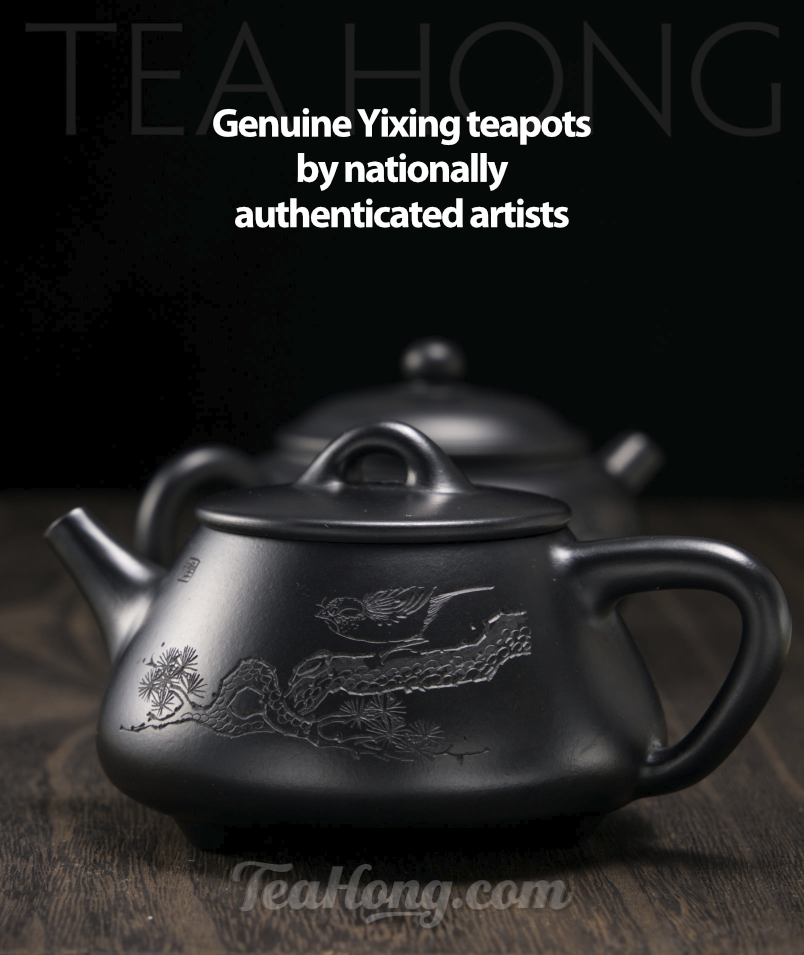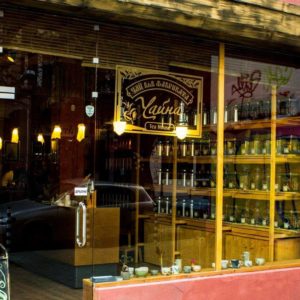Tieguanyin, Charcoal Style
This is an article about charcoal style tie’guanyin, for the introduction review about tieguanyin, please click here to go to the page.
This is one style that is much less often seen than the greener, bouquet style. Charcoal baking till browned is indeed the original style, though in the past two to three decades the other one has almost completely superseded it. The tradition is very gradually making a come back recently. However, because of the long absence, the proper technique has already become a rare craft — not all brown looking selections are authentic. Most are simply burnt.
Before we go into details, let’s first look at what this tea should taste and handle.
tasting and infusion notes
A fine matured charcoal style tieguanyin smells warm with a fresh, woody aroma. Infused properly, the liquor is crystal clear in an intense amber colour. The crisp, clean taste has a distinctive, chocolate-like flavour in a full body, with accents of bouquet and wood, and a sweet aftertaste. Because of its neutral TCM character, this tea is quite safe for the weak stomach or those who feel sick even after black tea (note). A freshly-baked one, however, retains too much fire energy and may not be good for those who are already suffering from “heat-toxins” (i.e. burning lips and/or tongue in the morning; or sour/reddened eyes; or pimple/acne problems etc). Let the tea rest for at least 6 months, but better for 3 years before consumption.

A thick, well-made Yixng teapot such as this one by He Yen Ping is a great way to get the best of a properly baked tieguanyin.
This tea is an ideal digestive for before, during and after food (the green style is not). It is customary in certain regions to have a tiny cup of a really strong infusion before and after meals. Strong tea during food is not advisable.
Because of its strength, a charcoal style tieguanyin is an excellent alternative for black teas if you like milk or sugar in your tea. It has pitches and nuances in its aroma and flavour that stand out from any black tea.
Infused to a high concentration and properly, the powerful liquor has a velvety texture and can deliver an exceedingly long sweet aftertaste, but this has to be taken in small doses (30 ~ 40 ml), or the caffeine can be over powerful for some. As you may have guessed, it takes a bit of skills to do this kind of infusion and it has to be in a fine Yixing pot. As much as 15 g of tealeaves is put into a 160 ml pot to infuse for 2 minutes for the liquor. Water has to be 5°C or more lower than the recommended 85°C. However, it is recommended that you have a higher degree of control of the gongfu infusion approach before trying this, or the result can be quite harshly strong.
storage and maturing
A properly baked and aired charcoal style tieguanyin matures well in small batches (200~500 g) in proper packages in room temperature. A fine tea begins to show a good profile in yr 3 and matures well in yr 5 to 8, dependent on the depth of the bake, the size of the pack and the storage temperature. Do not put them in the fridge. Do not vacuum pack them. For more storage details, please go to the tea storage page.
The test for a selection is approx 4 months into storage, when if the tea is not properly baked and aired, a grassy smell will grow from inside of the tea kernel. Such a selection will not mature well. Wait out another 6 months to let the grassiness subside before consuming the tea. This batch will not mature well.
If you are a trader and has the proper facility, and if the grassiness is slight, and the initial baking is not overtly strong, you can consider re-baking the tea. In an electric tea oven fill the gauze trays to a maximum of 4 cm deep. Set the initial bake at 100°C for 45 minutes (dependent on the size, loading and convection efficiency of your oven) and take the tea out for proper cooling for at least 2 hours before returning for an 80°C, 30 minutes bake. A charcoal oven is even more ideal for the job, and if you run one of such, maybe you do not need my advice for the technique.
However, if the tea is quite dark initially, re-baking will spoil the tea altogether. In such situation, wait it out and hope the grassiness will fade, which in some situations it will, but the tea will not mature well anyway.
“return of the green”
The condition of this grassiness growing out from within the produced tea is called “return of the green (or reverse of the green)” — “fan qing” in Chinese. This is quite a unique condition in charcoal style tieguanyin and classic style Phoenix oolongs. It is also occasionally seen in light style fermentation black teas such as floral style Keemun or Red Plum Classic. It happens when the final few rounds of baking for these teas are not properly executed.
This happens when the tea is too hastily baked at a high temperature to achieve a browned effect. The enzymes deep inside the leaves are not turned into more stable substances to the taste benefits but rather remain active, protected by the caramelized and carbonized surface of the leaf. They very gradually come back to live a few months later, releasing the natural by-product of the process: the grassy smell.
mastery in browning is the key
A responsible producer (not the farmer, although some people wear both hats) would keep the final browning process till the produced tealeaves is biochemically more stable. This is roughly 1 month for traditionally baked Phoenix oolongs, 5 months for lightly baked ones, and at least 6 months for tieguanyins. As for the light style black teas, just enough resting time between the two final baking sessions.
The browning process itself is critical. Most producer use minimal resources to achieve a browned appearance and a temporary aroma (much like some coffee roasters do), which is not what you want. A low temperature slow bake, with ample airing in-between sessions, is a showcase of a mastery producer. Some still insist on the use of traditional charcoal ash ovens with bamboo baking baskets, which give the tea a subtle extra aromatic nuance. However, it really is the mastery of the process that is the key to the incomparable taste experience of browned style oolongs.











